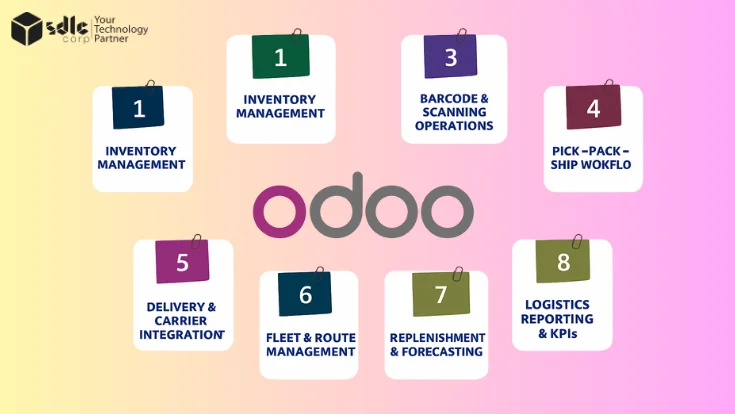Introduction
The Metaverse is fast becoming the next frontier in gaming, offering players immersive experiences that combine virtual reality (VR), augmented reality (AR), and social interaction in a shared, online space. However, creating a seamless, lag-free experience for thousands, if not millions, of players requires robust and scalable server infrastructure. In this blog, we’ll explore the challenges and solutions for developing scalable servers for Metaverse games, ensuring smooth gameplay, real-time interactions, and efficient management of massive amounts of data. This guide will be particularly valuable for those in Metaverse Game Development and those looking to enhance their server architecture.
Understanding the Need for Scalable Servers in Metaverse Games
Scalability is a critical factor in the success of Metaverse Game Development Services. In contrast to traditional games, Metaverse games host a vast number of users simultaneously in a shared virtual environment. To ensure that every player has a seamless experience, servers must be capable of handling sudden spikes in traffic without sacrificing performance. Whether it’s live events, large social gatherings, or spontaneous interactions between players, Metaverse games demand server infrastructures that scale efficiently.
A scalable server is one that can grow and shrink its resource allocation in response to the fluctuating demands of the game. This dynamic scalability helps minimize costs during off-peak hours and maximizes performance during peak traffic. Without such flexibility, players may face lags, downtimes, or poor experiences—affecting the overall success of the game and user retention.
Transform Your Gaming Experience Today!
A Metaverse Game Development Company specializes in creating immersive and engaging metaverse games for online and offline platforms.

Key Server Challenges in Metaverse Game Development
Developers face unique challenges when building servers for Metaverse games, including:
- Real-Time Data Synchronization: Metaverse games involve complex interactions in real-time. Players can move, chat, or make transactions, and all these actions need to be reflected in the game instantly. Achieving this level of real-time data synchronization across millions of users is a massive challenge.
- Managing Massive Concurrent Users: Traditional games usually cater to a few hundred or thousand players at a time. But Metaverse games can scale into millions of players simultaneously interacting with one another. Handling this vast number of concurrent users requires highly scalable infrastructure.
- Security and Privacy: Since many Metaverse games integrate financial transactions, such as in-game purchases, NFTs, or blockchain-based assets, ensuring secure and private interactions is critical. Developers must consider these factors when building their servers to ensure safe transactions and data privacy for users.
- Latency and Speed: High latency is the enemy of immersive gaming experiences. To maintain immersion in a Metaverse environment, developers must ensure that servers provide real-time, low-latency connections, even for users spread out globally.
Best Practices for Building Scalable Servers for Metaverse Games
Building scalable servers for Game Development Services in the Metaverse requires strategic planning and implementation. Here are some best practices to follow:
- Adopt Cloud-Based Infrastructure: Cloud-based solutions, such as Amazon Web Services (AWS) or Google Cloud, offer flexible scaling options, allowing servers to expand or contract depending on demand. Cloud infrastructure can also manage multiple zones to ensure that players from various regions can access low-latency servers.
- Leverage Load Balancing Techniques: Load balancing distributes the network or application traffic across multiple servers, ensuring no single server is overwhelmed. This not only enhances performance but also prevents downtime during peak traffic.
- Use Microservices Architecture: Metaverse games are complex and require managing various functions—such as AI, in-game economies, and social interactions—separately. A microservices architecture allows you to break down the game’s functionality into smaller, manageable services. This way, you can scale each part individually, improving efficiency and scalability.
- Implement Server Sharding: Sharding involves splitting the game world into different sections, each hosted on separate servers. This strategy helps distribute the load across servers, ensuring better performance, especially in a large Metaverse with multiple regions and zones.
- Use Edge Computing: Edge computing can reduce latency by processing data closer to the players. Instead of relying solely on central servers, edge computing distributes data across multiple local servers, ensuring faster load times and a smoother gaming experience.
The Role of Blockchain in Scalable Servers for Metaverse Games
The adoption of Blockchain Game Development in Metaverse games has increased exponentially. Blockchain technology provides decentralized solutions for storing and verifying data, which is especially useful for transactions involving in-game assets like NFTs. Servers for blockchain-based Metaverse games need to account for the unique demands of validating transactions across distributed ledgers.
Blockchain technology can also assist in securing the game’s infrastructure. Using decentralized networks, developers can protect player data and transactions from cyber-attacks, ensuring safe and private interactions in the Metaverse.
Level Up Your Metaverse Game! Get Expert Development Services Now!
At SDLC Corp, we create immersive metaverse games that engage players on any platform.

AI and Scalable Server Architecture
AI plays a significant role in enhancing both the gameplay and server performance of Metaverse games. From optimizing real-time user interactions to dynamically adjusting server resources based on demand, AI Development Services offer critical support in managing scalable server infrastructure.
- Dynamic Resource Allocation: AI can analyze traffic patterns and allocate resources dynamically, ensuring that servers remain optimized for performance during peak and off-peak hours.
- Predictive Maintenance: Using machine learning algorithms, AI can predict potential server failures or bottlenecks and take proactive measures to avoid downtime or lag. This ensures the game’s performance remains uninterrupted.
- Enhanced User Experience: AI can also enhance player experience by analyzing in-game behavior to provide personalized content, such as suggestions for new virtual assets or activities. Servers need to handle such computations at scale, further underlining the need for robust infrastructure.
NFT Integration and Server Scalability
With the rise of NFT Game Development, servers need to handle not only in-game assets but also unique, player-owned digital goods. NFTs (Non-Fungible Tokens) bring a new level of ownership and trade into the gaming world. Managing NFTs, which are blockchain-based, requires scalable and secure servers that can handle a high volume of transactions without compromising speed.
NFTs have introduced a new layer of complexity in Metaverse games. Servers need to verify the ownership, transfer, and trade of these digital assets in real time. Implementing decentralized storage solutions and utilizing blockchain technology can support NFT integration while maintaining server performance and scalability.
Testing and Future-proofing Scalable Servers
For Game Development Companies, future-proofing is key to success. The Metaverse is constantly evolving, and so are the demands on the server infrastructure. Here are some ways to ensure your server architecture is ready for future growth:
- Stress Testing: Before launching a Metaverse game, rigorous stress testing is essential. Simulate various levels of traffic, ranging from regular daily use to the extreme traffic experienced during special events. This will help you identify potential bottlenecks or failure points in the server infrastructure.
- Regular Updates and Scaling Plans: Server technology evolves rapidly, and so do the needs of a growing player base. Metaverse Game Development Companies should have a long-term plan for scaling their servers, keeping up with technological advancements, and updating infrastructure as needed.
- Collaboration with Cloud Providers: Many cloud providers offer specialized services for game development. Collaborating with cloud vendors can provide tailored solutions that meet the specific needs of your game, ensuring optimal performance, security, and scalability.
Explore our affordable Metaverse game development services
We design innovative metaverse games at SDLC Corp that redefine immersive experiences across platforms. Partner with us to craft something truly unforgettable.

Conclusion:
Developing scalable servers for Metaverse games is not just a necessity but a foundational requirement for providing players with a seamless, immersive experience. Whether you’re a Game Development Company working on your next big Metaverse title or a startup exploring Metaverse Game Development, the key to success lies in scalable, reliable, and secure server infrastructure. By adopting the right technologies such as cloud computing, blockchain, AI, and edge computing, you can ensure your servers are ready to handle the challenges of tomorrow’s Metaverse.
Scalable servers ensure that Metaverse Game Development Services can keep up with the rapidly evolving world of the Metaverse, offering smooth, real-time interactions, enhanced security, and a future-proof infrastructure capable of handling millions of players in a vast virtual universe.

















